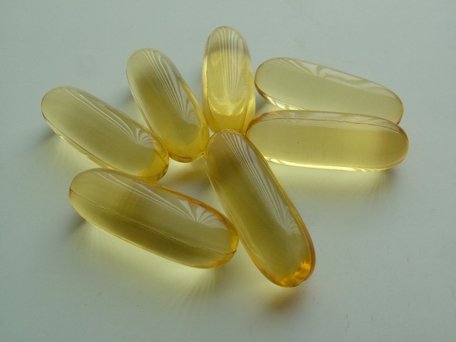 Middle-age spread seems to be a depressing fact of life for anyone over 40. It's as if a fat switch flicks on when you reach midlife and suddenly everything you eat lands up on your tummy.
Middle-age spread seems to be a depressing fact of life for anyone over 40. It's as if a fat switch flicks on when you reach midlife and suddenly everything you eat lands up on your tummy. Even the slimmest types end up broader in the beam - and once that fat is there, we all know how tough it is to shift, stubbornly defying even the most rigorous diet and exercise regimens.
The worry is that your tummy flab isn't just unattractive, it's also unhealthy, as it's a major risk factor for cardiovascular disease.
It doesn't matter how hard we fight it, middle age just seems to bring out the bulge
But it's not necessarily your diet - or lack of self discipline - that's to blame, says American gynaecologist and pharmacist, Dr C W Randolph.
He claims midlife spread in both men and women is the result of hormonal imbalance, specifically too little progesterone and too much oestrogen. And the problem with too much oestrogen is that the hormone acts like a fat magnet, locking it in around your middle.
As Dr Randolph explains, in a healthy person there is a finely-tuned balance between the three sex hormones: oestrogen, progesterone and testosterone. But as we age, that balance changes.
As a woman reaches her mid-30s, her levels of progesterone - which is produced in the ovaries and is essential for fertility - start to decline.
While most women approaching menopause will know their oestrogen levels drop, few realise that progesterone production declines even more rapidly - 120 times faster than oestrogen, says Dr Randolph.
This progesterone drop also occurs much earlier, at a time when a woman's oestrogen levels are still good. The result: oestrogen 'dominance'.
In men, there is a similar drop in progesterone - the hormone is produced in the adrenal and testicular tissue and is used to produce testosterone and cortisone.
But when men reach their 40s, their levels of progesterone decline, leading to a fall in testosterone levels as well. Again, the result is that oestrogen becomes more dominant.
It may surprise many men to learn that oestrogen is found in their bodies - in fact, not only do they produce it, but it's essential for healthy bones, brain and libido.
Dr Randolph believes this problem of oestrogen dominance is compounded by the raised levels of oestrogen in our food, water and environment.
The so-called xeno-oestrogens - chemicals found in pesticides, plastics and other materials - mimic the effect of oestrogen and are fat-soluble, so store themselves in the body.
'I believe that this oestrogen "dominance" is an epidemic in western societies,' says Dr Randolph.
'People living in the United States and in western Europe have been found to have much higher oestrogen levels at much younger ages than people living in less industrialised countries, and many experts link these high levels of oestrogen to environmental exposure.'
Scientists generally agree that too much oestrogen leads to increased body fat
While other medics are yet to be convinced by the risks of this ' environmental' oestrogen, it is generally accepted that too much oestrogen circulating in the body increases body fat.
Although doctors don't know how this happens, one theory is that oestrogen reduces the body's ability to process and metabolise fatty acids after a meal, making it more likely to remain in your system and be deposited in fat stores.
What is clear is that fatty tissue itself produces oestrogen which in turn makes the body 'better' at storing fat. It is a vicious circle.
Furthermore, the action of oestrogen also inhibits your body's ability to effectively use fat stores for energy. 'The result is extra weight that won't go away even with more exercise or less eating,' says Dr Randolph.
In men and women, higher oestrogen levels predispose the body to store fat around the abdomen. Researchers have found that changing patterns of hormone production (the domination of oestrogen) causes the average man and woman to add 1-2lb around their middle every year from the ages of 35 to 55.
Dr Randolph claims that oestrogen dominance also affects the thyroid gland (which controls your metabolism), causing sluggishness and compounding the weight gain.
'As long as your body's metabolism is compromised by a hormone imbalance - most particularly oestrogen dominance - the extra pounds around your middle will be almost impossible to lose.'
Not only will too much oestrogen make you fat around the middle but it can cause a host of other symptoms, says Dr Randolph - in women these range from headaches to incontinence (as the hormone affects the muscles); in men, symptoms include depression and reduced libido.
However, Dr Randolph believes it is possible to rebalance your hormones so enabling the body to shift fat - particularly around the middle - permanently, with benefits for your health.
Based on his many years of treating men and women with sometimes debilitating hormonal symptoms, he claims that patients who made even small changes lost considerable amounts of weight around their waist.
There are two main prongs to his approach. The first is dietary, and involves avoiding ' oestrogen-stimulating' foods and boosting your intake of foods that shift excess oestrogen out of your system.
He recommends the following:
Foods to beat middle-age spread
• Cruciferous vegetables. such as broccoli and spring greens contain a nutrient called indole-3-carbinol which has been shown to help reduce the body's load of excess oestrogens.
Try to eat 2-3 servings (21/2 oz or 75g when cooked) a day. Other cruciferous vegetables include asparagus, cauliflower, spinach, Brussels sprouts, celery, beetroot, kale, cabbage, radish and turnip.
• Citrus fruits contain d-Limonene, another substance shown to help with oestrogen 'detoxification'.
Eat one serving a day or substitute 175ml/10fl oz of fruit juice once every other day.
• Boost your intake of insoluble fibre. Although soluble fibre is good for you (it regulates the flow of waste material through your digestive tract), in this context insoluble fibre is better still because it binds itself to extra oestrogen in the digestive tract and carries it out.
Increased fat can have serious health consequences
Good sources include wholemeal bread, barley, couscous, brown rice, whole-grain cereal and wheat bran, seeds, carrots, cucumbers, courgettes, celery and tomatoes. Eat two servings of insoluble fibre such as 1 slice bread or 1 oz seeds a day.
• Sprinkle ground linseed and sesame seed on salads and vegetables, and switch to flaxseed oil. The friendly bacteria in our intestines convert these foods into substances with weak oestrogen-like activity. According to Dr Randolph, when the body is oestrogen dominant, these 'new' plant oestrogens bind to your body's oestrogen receptors, reducing human oestrogen activity.
Add 2-3 tablespoons a day of ground flaxseed, sesame seeds or oil to smoothies, yoghurt or salads, or stir into cottage cheese or sprinkle over steamed vegetables.
In addition to these recommendations, Dr Randolph suggests adding a portion of protein to every meal (a high-protein diet can help increase the amount of a hunger-fighting hormone known as peptide YY, so aiding weight loss). And keep up your consumption of calcium-rich foods (such as yogurt, cottage cheese, cheese, baked beans, skimmed milk, almonds) to preserve bone health; eat at least one other portion of fruit a day (to boost fibre and nutrient intake); drink eight glasses of water; and use heart-protecting olive or rapeseed oil rather than vegetable oil for dressings and cooking.
Foods to avoid
• Those high in saturated fats (such as bacon, sausages, ham, chips, crisps, butter, biscuits, pastries) have been linked to higher levels of oestrogen circulating in the blood.
• Refinged or processed foods (anything containing white sugar, flour and rice) raise blood sugar levels and stimulate the release of the hormone insulin to mop up the excess sugar. This in turn negatively impacts hormone balance.
• Caffeine - studies show that two cups of coffee a day can increase oestrogen levels.
• Alcohol - oestrogen is not efficiently broken down by an overtaxed liver. Dr Randolph believes the liver is affected after two drinks a day.
• Soya products - according to Dr Randolph these natural plant oestrogens can compound an underlying hormone imbalance.
As well as dietary changes, Dr Randolph advocates a comprehensive course of vitamin and mineral supplements.
These include calcium d-glucarate and diindolylmethane (DIM) (both found in leafy green vegetables), and B complex and vitamin E (to support oestrogen detoxification) - although many dietitians and other experts would argue we should be able to get all the nutrients our bodies need from a good balanced diet.
By Louise Atkinson
Daily Mail, UK Last updated at 1:35 AM on 5th May 2009
C.W. Randolph, Jr., M.D., a bioidentical hormone physician, has treated thousands of women and men with hormone imbalances for more than a decade. A graduate of Louisiana State University School of Medicine, Dr. Randolph is board-certified by the American College of Obstetrics and Gynecology as well as the American Board of Holistic Medicine. Because he practiced as a compounding pharmacist before returning to medical school, Dr. Randolph is also board-certified by The International Academy of Compounding Pharmacists. As the co-founder of The Natural Hormone Institute, Dr. Randolph continues to be a frequent speaker for medical and consumer health organizations across the country. He is the co-author of the best-selling books, From Hormone HELL to Hormone WELL, From Belly FAT to Belly FLAT, and a new book about sexual health and the hormone connection, In the Mood Again (Simon and Schuster, January 2010).
Picture Credit
 Notice the crystal clear water in my outdoor 'koi' pond?
Notice the crystal clear water in my outdoor 'koi' pond? 














